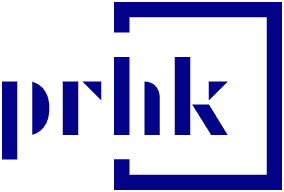PRHK Viewpoints: Mid-pandemic social media best practices to hang your hat on
Communicating through COVID – in Hong Kong or anywhere – continues to be illuminative. Working for a global consultancy in a region that was hit first means I’ve now been counselling clients and supporting international colleagues at opposing stages of the cycle for the best part of a year.
Anyone with skin in the game – from brand strategists to crisis counsel – have found that tracking brand activity in extraordinary times makes for fascinating insights. Whether you’ve experienced brand triumphs or corporate missteps, COVID learnings have been crucial.
You don’t need to be a digital communicator to realise that the value of social media is at an all-time high. Social channels through 2020 have been everything from early news-breakers to welcome, playful distraction; both supportive communities and customer service lifelines.
Language has been the essential tool for revelation and resilience, reassurance and persuasion. From reactive social media boilerplates to agile responses and real-time comments; through crafting COVID-19 mini-sites to social media campaigns, we’ve learned – in the moment and on the job – what captures consumer and follower attention. Three COVID waves in: what takeaways have stood out?
Brand voice – shift significantly but don’t change completely.
It’s tempting to hijack a chaotic moment in time to transform your online persona. But marketers have learned that handbrake turns, especially in highly established brands, might bewilder rather than impress audiences. In ever-changing times, some stability is good.
That said, some of our clients have used the occasion to successfully unveil a new empathy-first, human-centric tone of voice. This isn’t just for consumer centric brands. B2B brands can use these troubled times to freshen up their social copy, drop formality or even enthusiastically dive into emojis. In uncertain times, emotionally-attuned brands have triumphed.

Timing is all – don’t jump ahead of the recovery curve.
Early on in COVID, you’ll probably have noticed a social campaign or post that nosedived because a brand jumped the gun or pressurised audiences before they were ready. Overly ‘selling’ or tone-deaf content can bomb. Even the fact that content is sponsored won’t save you from falling on the wrong side of audience sensitivities.
Real-time social listening – even manual sentiment scanning – can save you from this. Ideas floated two weeks ago in a content planning meeting can easily feel dated come posting time. We’ve learned, too, how essential a function geo-targeting or exclusion is for social posts. If you’re planning content for a global channel, know that individual regions are at varying stages of crisis and recovery. Content and messaging must be tailored to suit.

Keep up your response rate.
It really is the worst time to scale back on community management. With marketing budgets cut, bandwidth investment in properly trained community managers can be the first to go. The outcome? Poor or erratic response rates to comments and messages on social channels.
But with homebound consumers spending more time online and more typically at stake, the quicker they want their responses to reach them. Speed and sincerity have a very real impact on customer retention and repeat purchases. Think about it: if a brand isn’t present or responsive during unusual times, why should you stick around when things are back to normal? And crucially: if you’re inundated with messages, let audiences know. Not once, but regularly, as long as the situation continues.

Be as visible as possible.
Above all, don’t drop off, keep communicating. Airlines are a good example – even though most have slashed budgets, frozen marketing campaigns and made media buy disappear for now, they understand the importance of keeping social at the forefront. It’s essential for commercial recovery to avoid becoming invisible, and brands can continue to engage and – yes, delight – customers on a variety of topics even when they are not actively flying, buying or investing.
Across multiple industry verticals, we’ve actually seen many of our clients up their post frequency, not dial it down. Communications must continue, and organic owned channels are an essential – and value for money – part of that. And if you can only commit to organic content right now, sacrificing reach for some hyper-or high value engagement is a great pay-off.
Shifting focus from quantitative to quality engagement, we’ve noticed brands have had great success when they open up the floor to niche audiences. They’re using Facebook Top Fan campaigns, interactive Instagram Stories or LinkedIn polls to soft-sound fresh ideas and new approaches with their most engaged customers.
Finally, the cyclical nature of pandemic behaviour means we’re seeing many repeat patterns, albeit with slight tweaks. In recognising the signs, we can lean into the cycles, and steel ourselves for the dips. As communicators, our role is the same as ever: to consider our audiences and address them with purpose, every step of the way.
This piece was written by Jessica Clifton, Digital Strategist, Ketchum Hong Kong and member of PRHK. PRHK Viewpoints is an article series contributed by members of PRHK, Hong Kong’s PR & communications association.

